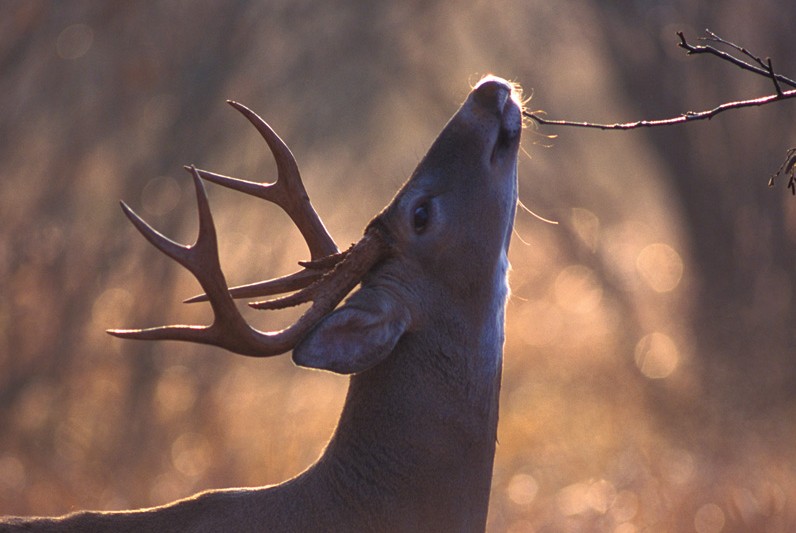Advertisement
Deer don’t live in large social groups. Instead, does often band together in small matriarchal groups, while bucks join bachelor clubs. They stay in these groupings—typically limited to four to six individuals—throughout most of the year. As a result, most deer don’t come into regular direct contact with one another, relying instead on pheromones to communicate their mood, location, territorial dominance and sexual readiness.
During the rut, does may stay in heat for a couple of days, but they’re only fertile for about 24 hours. So those big bucks that have patiently waited for 11 months don’t have time to waste to randomly scour the countryside searching for mates. To maximize efficiency during this frenzied reproductive phase, deer have created a complex scent communication system of scrapes, licking branches and rubs, where their pheromones have been deposited from their tarsal, forehead and preorbital glands.
Advertisement
Scrapes
Tarsals are the most important deer glands during the fall rut. Covered with dark, urine-stained tufts of raised hair, tarsals are found halfway up the back of each hind leg. A buck will constantly urinate on these glands to create a distinctive musky odour by hunching its back and pressing its rear legs together. This is called rub-urination.
Every time a buck makes a scrape, he’ll rub-urinate, depositing the musky pheromones from his tarsal glands onto the freshly pawed earth. When other deer discover this signpost, they can identify the maker, as well as assess his health and dominance.
If a doe in heat finds a scrape that has an appealing scent, she’ll hang around, waiting for the maker to return. An intrigued doe will even urinate into the scrape herself to entice a desirable buck even further.
Advertisement
During the pre-rut, rut and post-rut, bucks will check and freshen the scrapes in the core of their home range more frequently than those they’ve made along the perimeter-as long as they’re not already tending to a doe in heat. If you find a spot where there are several scrapes within sight of one another, you’ve arrived in active buck territory.
Tips
- Whenever you find a cluster of scrapes within sight of one another, check the prevailing winds and survey the area for trees that can handle a treestand (they should be wider than your torso to break up your silhouette), as well as potential shooting lanes. Also look for nearby bedding or feeding habitat, and think ahead about your entry and exit strategies. Once you’ve considered all the variables, hang a treestand or two, preferably on opposite sides of the active zone in case the wind direction changes.
- Whenever you check a scrape, use a branch or twig to freshen it up and wipe it clear of any tracks. That way, if there are fresh tracks the next time you visit, you’ll know the scrape is still active. This is particularly helpful if you don’t have a trail cam set up in the area.
Licking Branches
The location where a buck chooses to make a scrape is always dictated by the presence of an appealing overhanging branch, approximately five feet above the ground. Known as licking branches, these limbs should really be called nibbling branches because the buck chews off the tip of the branch with his front teeth. He then rubs his face on the wet nub, depositing pheromone secretions from his forehead and preorbital glands, found near the eye pit toward the nose.
A buck will always create the licking branch first, then paw the ground below and rub-urinate on the fresh earth. Combined, the licking branch and the scrape are the whitetail’s primary scent communication post during mating season.
Tips
- Sometimes, bucks can work an active scrape so aggressively they’ll snap off the licking branch. If that happens, the scrape will become inactive and prowling bucks will no longer visit; this shows that the licking branch is just as important as the pawed up earth below it.
- If a scrape near your treestand loses its licking branch, you’ll need to replace it to keep the site active. While wearing scent-free gloves, find a similar branch from a nearby tree and cut it off with pruning shears. Using twist ties, attach the fresh limb to the broken branch hanging over the hot scrape. This should keep the scrape active-and your treestand a worthwhile hunting post.

